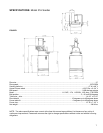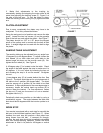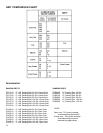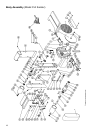
12
FENCE/TABLE
The fence attachment is used with the belt sander and
can be positioned alternately as a table (with the belt arm
in upright position) or as a fence (with the belt arm in
horizontal position). The fence attachment surface has a
slot for a mitre gauge when the attachment is used as a
table. The fence attachment can be tilted between 90-
degree and 45-degree angles by loosening the knob (A)
on the center portion of the attachment. Manually move
the fence to the desired angle and tighten the knob (A).
See Figure 13.
To position the fence at an angle across the belt (for
skew sanding as shown in Figure 14), use a 3/16 hex
wrench to loosen the two socket head screws (B, Fig.
13). Rotate the fence attachment by sliding it around the
bolts using the curved slot (C). When the desired
position is reached, re-tighten the screws (B).
To change the fence attachment from fence to table, or
vice-versa, remove the two socket head screws (B)
shown in Figure 13. Remove the fence attachment and
rotate the pivot plate (D) 180 degrees lining the holes up
with the holes in the sander. See Figure 15. Place the
fence attachment on the pivot plate with the table
perpendicular to the belt. Line up the slots with the holes
on the pivot plate and the sander, then replace and
tighten the screws (B).
CAUTION: Always mount the base of the fence
attachment through the pivot plate. Failure to
do so could lead to damage to the fence attachment
and also ruin the sanding belt.
The chart on page 13 lists the various grits and materials
used and lists the grit symbols. It is generally better to
start with a slightly coarser abrasive than would seem
practical because it will give faster material removal,
generate less heat, and will sand more freely. As it dulls,
it will tend to act like a finer abrasive.
Too often, the user will expect one belt or disc to take
care of all situations; however, the materials to be
sanded, the desired finish and the amount of material to
be removed all have an effect on the selection grade of
grit, abrasive material and construction. Contact
suppliers of abrasive belts and discs for their
recommendations on the work to be done.
!


















